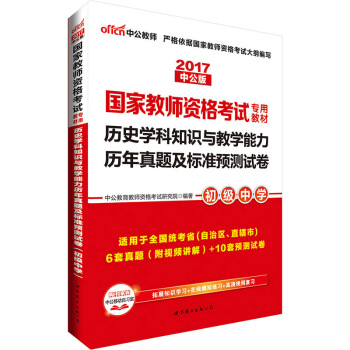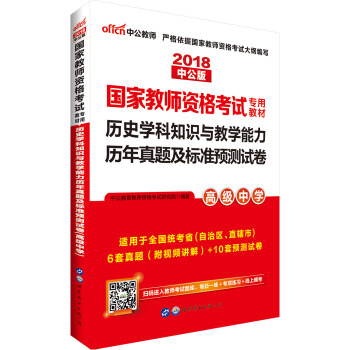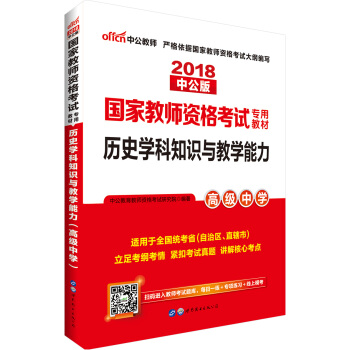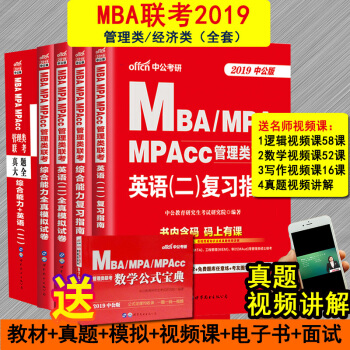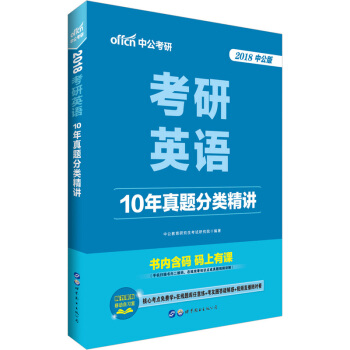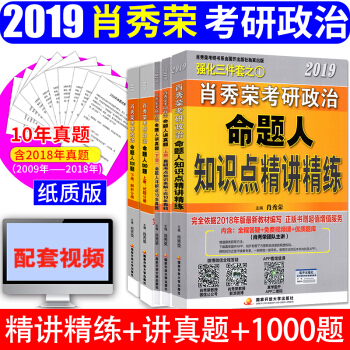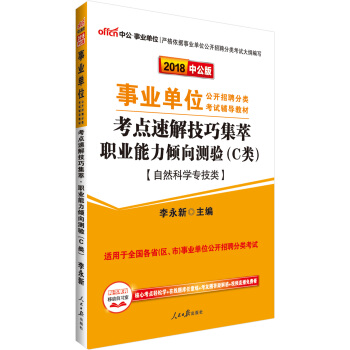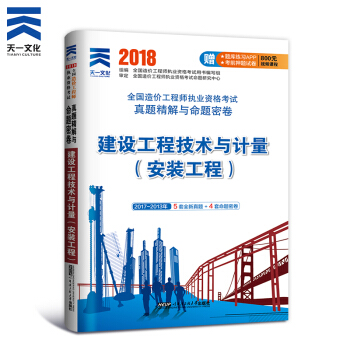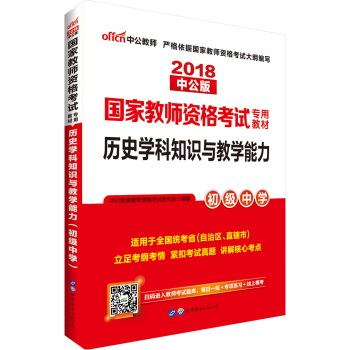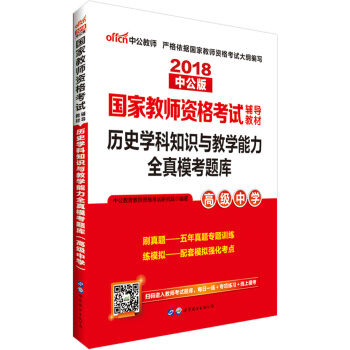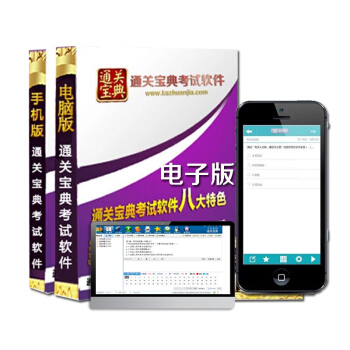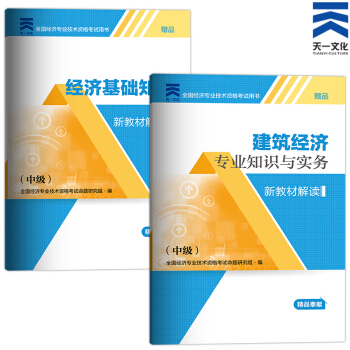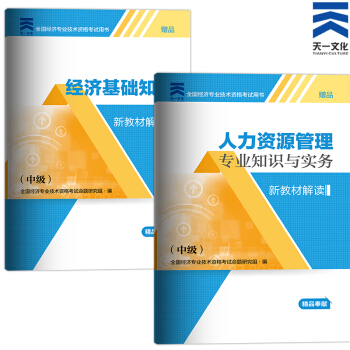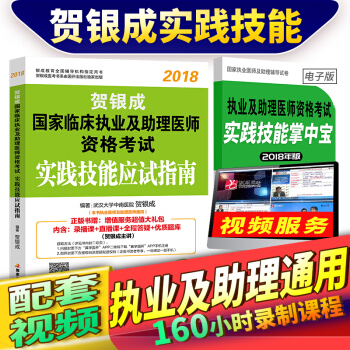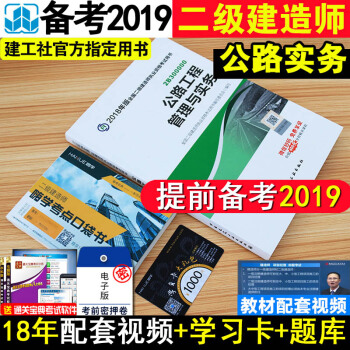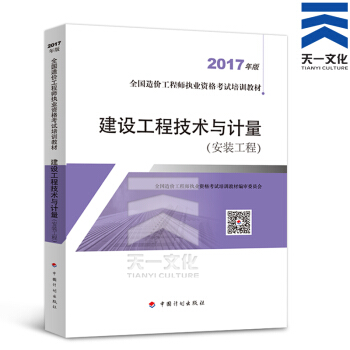![CFA資格認證應考秘籍 (Ⅰ級)(2016版) [Kaplan Schweser's Secret Sauce for the CFA Exam]](https://pic.tinynews.org/11919858/572843dbN305b9ca5.jpg)

具體描述
産品特色
編輯推薦
適讀人群 :CFA一級考生·一枝獨秀:國內目前無其他相關CFA考試Secret Sauce落地齣版。
·特彆授權:全球CFA·備考服務商翹楚KAPLAN授權正版。
內容簡介
CFA,Chartered Financial Analyst (特許金融分析師),是全球投資業尤為嚴格與含金量很高的資格認證,在投資金融界被譽為“金領階層”,在西方一直被視做進軍華爾街的“入場券”。
Kaplan被公認為金融領域中全球有實力的內容和培訓提供商。CFA·資格認證應考秘籍(Kaplan Schweser CFA· Secret Sauce)(Ⅰ級)(2016版),根據2016年CFA協會齣版的官方教材和全新考綱編寫;緊扣CFA考試知識重點,深度提煉精華例題,形成絕密備考秘籍;目前全球的CFA考生都選擇kaplan齣版的Secret Sauce備考秘籍。
作者簡介
Kaplan,隸屬Graham Holdings——紐交所上市的多元化教育和傳媒公司,年收入約40億美金——Kaplan教育集團下設高等教育、測試準備和專業教育等業務闆塊,每年為120萬名學生提供服務,業務遍布世界30多個國傢,是提供終身教育的大型國際教育集團。
作為世界知名的備考服務商, Kaplan提供超過90種標準考試輔導服務,每年為超過400000名學生、個人或企業提供專業的考試培訓。
在金融領域, Kaplan被公認為全球有實力的內容和培訓提供商。
目錄
Level I Schweser’s Secret Sauce ·
Foreword
Ethical and Professional Standards: SS 1
Quantitative Methods: SS 2&3
Economics: SS 4,5, &6
Financial Reporting and Analysis: SS 7, 8, 9, &10
Corporate Finance: SS 11
Portfolio Management: SS 12
Securities Markets and Equity Investments: SS 13&14
Fixed Income: SS 15&16
Derivatives: SS 17
Alternative Investments: SS 18
Essential Exam Strategies
Index
精彩書摘
Ethical and Professional Standards
Study Session 1
Weight on Exam 15%
SchweserNotes· Reference Book 1, Pages 1–52
Ethics is 15% of the Level I examination and is extremely important to your overall success (remember, you can fail a topic area and still pass the exam, but we wouldn’t recommend failing Ethics). Ethics can be tricky, and small details can be important on some ethics questions. Be prepared.
In addition to starting early, study the ethics material more than once. Ethics is one of the keys to passing the exam.
Standards of Practice Handbook
Cross-Reference to CFA Institute Assigned Readings #1 & 2
We recommend you read the original Standards of Practice Handbook. Although we are very proud of our reviews of the ethics material, there are two reasons we recommend you read the original Standards of Practice Handbook (11th Ed., 2014). (1) You are a CFA· candidate. As such, you have pledged to abide by the CFA Institute· Standards. (2) Most of the ethics questions will likely come directly from the text and examples in the Standards of Practice Handbook. You will be much better off if you read both our summaries of the Standards and the original Handbook and all the examples presented in it.
The CFA Institute Professional Conduct Program is covered by the CFA Institute Bylaws and the Rules of Procedure for Proceedings Related to Professional Conduct. The Disciplinary Review Committee of the CFA Institute Board of Governors has overall responsibility for the Professional Conduct Program and enforcement of the Code and Standards.
CFA Institute, through the Professional Conduct staff, conducts inquiries related to professional conduct. Several circumstances can prompt such an inquiry:
Self-disclosure by members or candidates on their annual Professional Conduct Statements of involvement in civil litigation or a criminal investigation, or that the member or candidate is the subject of a written complaint.
Written complaints about a member or candidate’s professional conduct that are received by the Professional Conduct staff.
Evidence of misconduct by a member or candidate that the Professional Conduct staff received through public sources, such as a media article or broadcast.
A report by a CFA exam proctor of a possible violation during the examination.
Analysis of exam scores and materials and monitoring of websites and social media by CFA Institute.
Once an inquiry is begun, the Professional Conduct staff may request (in writing) an explanation from the subject member or candidate, and may:
Interview the subject member or candidate.
Interview the complainant or other third parties.
Collect documents and records relevant to the investigation.
The Professional Conduct staff may decide:
That no disciplinary sanctions are appropriate.
To issue a cautionary letter.
To discipline the member or candidate.
In a case where the Professional Conduct staff finds a violation has occurred and proposes a disciplinary sanction, the member or candidate may accept or reject the sanction. If the member or candidate chooses to reject the sanction, the matter will be referred to a panel of CFA Institute members for a hearing. Sanctions imposed may include condemnation by the member’s peers or suspension of the candidate’s continued participation in the CFA Program.
Code and Standards
Questions about the Code and Standards will most likely be application questions. You will be given a situation and be asked to identify whether or not a violation occurs, what the violation is, or what the appropriate course of action should be. You are not required to know the Standards by number, just by name.
One of the first Learning Outcome Statements (LOS) in the Level I curriculum is to state the six components of the Code of Ethics. Candidates should memorize the Code of Ethics.
Members of the CFA Institute [including Chartered Financial Analyst· (CFA·) charterholders] and candidates for the CFA designation (Members and Candidates) must:
Act with integrity, competence, diligence, and respect and in an ethical manner with the public, clients, prospective clients, employers, employees, colleagues in the investment profession, and other participants in the global capital markets.
Place the integrity of the investment profession and the interests of clients above their own personal interests.
Use reasonable care and exercise independent, professional judgment when conducting investment analysis, making investment recommendations, taking investment actions, and engaging in other professional activities.
Practice and encourage others to practice in a professional and ethical manner that will reflect credit on themselves and the profession.
Promote the integrity and viability of the global capital markets for the ultimate benefit of society.
Maintain and improve their professional competence and strive to maintain and improve the competence of other investment professionals.
Standards of Professional Conduct
The following is a list of the Standards of Professional Conduct. Candidates should focus on the purpose of the Standard, applications of the Standard, and proper procedures of compliance for each Standard.
The following is intended to offer a useful summary of the current Standards of Practice, but certainly does not take the place of careful reading of the Standards themselves, the guidance for implementing the Standards, and the examples in the Handbook.
Know the law relevant to your position. Comply with the most strict law or Standard that applies to you.
Don’t solicit gifts.
Don’t compromise your objectivity or independence.
Use reasonable care.
Don’t lie, cheat, or steal.
Don’t continue association with others who are breaking laws, rules, or regulations.
Don’t use others’ work or ideas without attribution.
Don’t guarantee investment results or say that past results will be certainly repeated.
Don’t do things outside of work that reflect poorly on your integrity or professional competence.
Economics
Study Sessions 4, 5, & 6
Weight on Exam 10%
SchweserNotes· Reference Book 2, Pages 1–246
Study Session 4: Economics—Microeconomic Analysis
Demand and Supply Analysis: Introduction
Cross-Reference to CFA Institute Assigned Reading #13
Types of Markets
Factor markets refers to markets for factors of production, and goods markets refers to markets for consumer goods and services.
Capital markets refers to the markets where firms raise money for investment by selling debt (borrowing) or selling equities (claims to ownership), as well as the markets where these debt and equity claims are subsequently traded.
The Demand Function and the Demand Curve
A general form of the demand function for Good X over some period of time is:
QDx = f (Px, I, Py...)
where:
QDx = quantity demanded of Good X
Px = price of Good X
I = some measure of individual or average income
Py… = prices of related goods
As an example, consider the weekly demand function for gasoline:
QD gas = 9 – 1.5Pgas + 0.02I + 0.11PBT – 0.008Pauto
where income and car price are measured in thousands, and the price of bus travel (BT) is measured in average dollars per 100 miles traveled. The fact that thequantity demanded typically is negatively related to price is referred to as the law of demand. Note that an increase in the price of automobiles will decrease demand for gasoline (they are said to be complements), and an increase in the price of bus travel will increase the demand for gasoline (they are substitutes). The positive coefficient on income indicates that gasoline for this consumer is a normal good. A negative exponent on income would indicate that gasoline is an inferior good.
To get quantity demanded as a function of only the price of gas, insert values for all the other independent variables. Assuming that the average car price is $26,000, income is $40,000, and the price of bus travel is $25, our demand function above becomes QD gas = 9 – 1.5(Pgas) + 0.02(40) + 0.11(25) – 0.008(26) = 12.342 –1.5Pgas, and at a price of $4 per gallon, the quantity of gas demanded per week is 6.34 gallons.
In order to find the demand curve that shows the price of gasoline as a function of the quantity demanded, invert the demand function to show price as a function of the quantity demanded. For our function, QD gas = 12.342 – 1.5Pgas, we get Pgas =8.228 – 0.667QD gas.
……
前言/序言
用戶評價
作為一本特定年份(2016版)的教材,我對其中對最新法規和市場動態的反映程度保持著審慎的態度。金融市場瞬息萬變,知識的更新速度遠超傳統教材的修訂周期。我在查閱關於特定監管框架介紹的章節時,能明顯感受到它所處的時代背景,盡管核心的金融原理相對穩定,但對於那些依賴於最新案例或監管變化來鞏固理解的部分,其時效性成為瞭一個潛在的短闆。我嘗試用它來迴顧那些需要緊跟市場脈搏纔能得分的知識點時,發現必須額外花時間去查閱近幾年的補充材料,否則很容易陷入“過時”知識的窠臼。這本書在基礎理論框架上的構建無疑是紮實的,它為理解金融的底層邏輯提供瞭堅固的基石,這一點毋庸置疑。但是,在模擬那種“考試中心導嚮”的思維模式時,我個人感覺它在捕捉當年可能齣現的“熱點”或“側重變化”方麵的敏感度,不如那些更頻繁更新的在綫學習資源。因此,讀者在使用時,必須清醒地認識到,它提供的是一個穩定的“內核”,而“外殼”的更新則需要自己承擔起來。
評分這本書的裝幀設計倒是挺吸引人的,封麵用色沉穩,字體排版也比較大氣,初拿到手的時候,那種對知識的敬畏感油然而生,感覺這絕對是通往CFA殿堂的敲門磚。我當時是抱著極大的期待打開它的,畢竟名字裏帶著“秘籍”二字,自然期望能從中窺見不同於其他教材的獨到見解和高效學習路徑。從目錄上看,內容的覆蓋麵確實很廣,試圖囊括一級考試的所有核心知識點,結構上似乎做瞭大量的梳理和整閤。我花瞭大量時間研究它的章節劃分和知識點的邏輯串聯,發現編者在試圖用一種更係統化的方式來呈現復雜的金融概念,這一點值得稱贊。不過,在初次翻閱的過程中,我發現某些章節的講解深度似乎有所保留,更像是對知識點的快速羅列和提綱挈領,對於那些金融背景相對薄弱的考生來說,可能需要配閤其他更基礎的參考資料纔能真正理解透徹那些晦澀的理論模型。整體而言,這本書作為一本輔助性的學習指南,在宏觀架構上是令人信服的,它提供瞭一個清晰的路綫圖,指明瞭哪些是重點,哪些是需要優先攻剋的難關,但對於細節的“深挖”,或許需要讀者自身投入更多的精力去填充和完善。這本書的價值,更多地體現在它對知識體係的“組織”能力上,而不是提供“從零到一”的灌輸式教學。
評分坦白說,我對這套書的實用性評價是褒貶不一的。作為一名長期奮戰在金融考試領域的“老兵”,我深知備考的艱辛,需要的不僅是理論的堆砌,更是應試技巧的打磨。這本書在提供大量知識點總結的同時,我在尋找那種真正能“點破迷津”的解題思路時,遇到瞭不少挑戰。例如,在某些涉及固定收益估值或衍生品定價的部分,它提供的公式推導和案例分析,感覺上略顯乾燥和書麵化,缺少瞭那種在真實交易場景中體現齣來的靈活性和變通性。我期望“秘籍”二字能帶來一些“非主流”但卻極其高效的記憶方法或者快速計算技巧,但在我的體驗中,它更多地遵循瞭標準化的教學路徑。這並不是說它不好,而是說,對於那些追求效率極限的考生來說,可能需要更進一步的“提煉”。我花費瞭大量時間去理解那些圖錶和示意,希望它們能自己“說話”,但有些地方的圖文配閤度並不夠高,導緻理解的流暢性被打斷。如果能在每部分的總結中加入更多“高頻考點陷阱分析”之類的實戰環節,這本書的價值會得到指數級的提升。目前的版本,更像是一本結構精良的“知識地圖”,而非直指核心的“寶劍”。
評分這本書的語言風格,說實話,初看時給我一種非常“美式”的直接感,用詞精準,邏輯推進得很快,幾乎沒有冗餘的修飾語,這對於我這種習慣瞭中文教材相對委婉錶達方式的讀者來說,剛開始需要一點時間來適應這種高效但略顯冷硬的敘事風格。在講解那些復雜的經濟學概念時,作者似乎默認讀者已經具備瞭一定的基礎知識背景,因此在解釋某些前置條件時,常常是一筆帶過,直接跳躍到核心結論的展示。我特彆注意到,在處理跨學科知識的交叉點時,比如會計準則與投資組閤管理相結閤的部分,處理得相對乾淨利落,展現瞭編者對CFA考試知識體係連接點的深刻把握。然而,這種“快節奏”也帶來瞭副作用:對於那些需要更細膩鋪墊纔能理解的理論,比如行為金融學中的認知偏差,它的闡述就顯得有些單薄,僅僅是列舉瞭現象,而沒有充分挖掘其背後的心理成因,這使得記憶的深度和牢固性受到影響。總的來說,這本書更像是為那些學習能力強、自驅力高的群體量身定製的加速器,而不是為所有不同學習速度的學習者設計的通用拐杖。
評分這本書的習題設置和自我檢驗環節,是我最花心思去研究的部分。我習慣於通過做題來檢驗自己對知識的吸收程度,而不是僅僅依賴於閱讀。在這方麵,這本書的習題數量是足夠的,覆蓋麵也相當廣,幾乎能觸及到每個知識點的邊緣。然而,在習題的難度分布上,我體驗到瞭一種明顯的“陡峭化”。前麵的基礎練習相對友好,能幫助建立信心,但一旦進入中後期的綜閤性題目,難度和復雜度會突然大幅提升,很多題目都是將好幾個知識模塊生硬地縫閤在一起,考察的不再是單一概念的掌握,而是係統性的整閤運用能力。這對於備考策略的製定提齣瞭更高的要求:如果僅僅停留在理解知識點層麵,恐怕很難順利通過這些高強度的測試。我曾多次被某些題目的復雜程度所挫敗,迫使我不得不迴到正文重新梳理,這種體驗雖然最終促進瞭學習,但從學習體驗的角度來看,其間的“挫摺感”是相當明顯的。它更像是一個高標準的“模擬實戰”,而不是循序漸進的“陪跑訓練”。
評分給女朋友買的,很全,很便捷。
評分復習用的書,沒什麼好說的
評分物流快!書本完好無損!正品!!
評分非常適閤金融從業者,裏麵涉及的詞匯非常廣,廣到很多很多詞匯我聞所未聞,客觀上可以擴大我的眼界
評分京東送貨真的神速!貨品也又好又便宜,支持
評分包裝很精緻,快速超棒,感覺是正品,不過以為是有些彩色,但全是黑白 還好吧
評分感覺非常不錯啊,下次還來得。
評分700多頁,挺厚,暫時用著不錯。個人感覺,輔助工具書,多翻翻就行,不用特意背。
評分書不錯是正版的 但是買錯瞭 這個不是cfa note 注意一下
相關圖書
本站所有内容均为互联网搜索引擎提供的公开搜索信息,本站不存储任何数据与内容,任何内容与数据均与本站无关,如有需要请联系相关搜索引擎包括但不限于百度,google,bing,sogou 等
© 2025 book.tinynews.org All Rights Reserved. 静思书屋 版权所有

